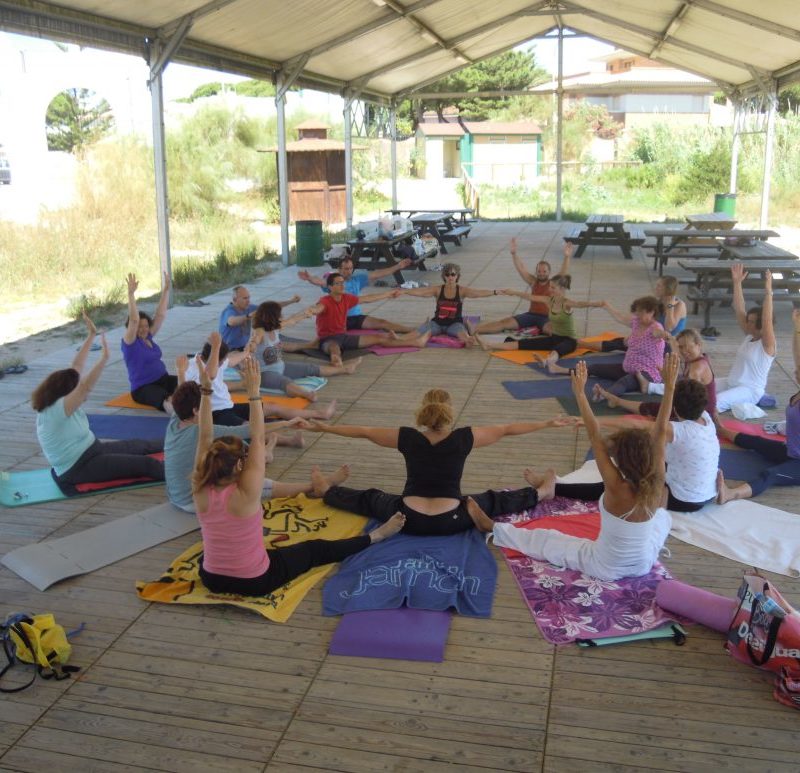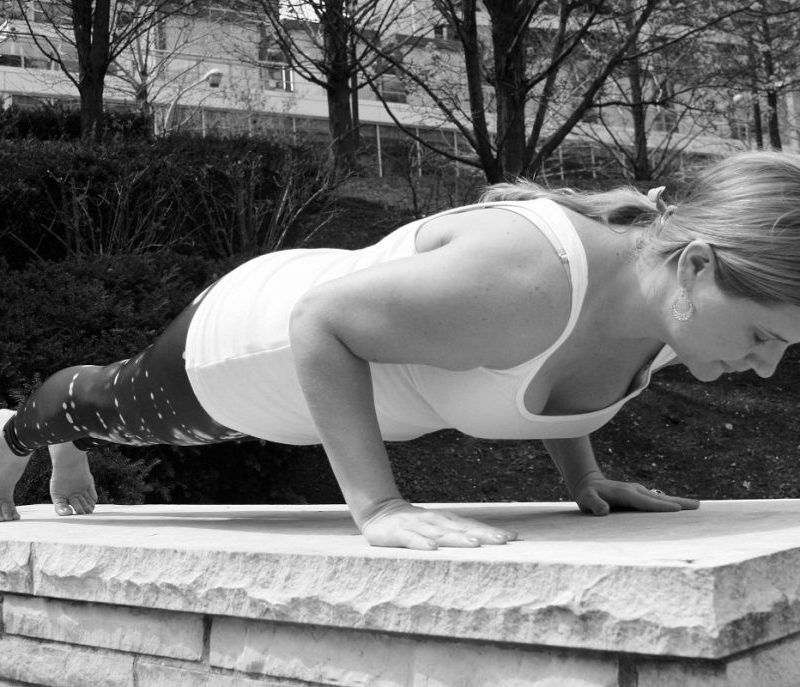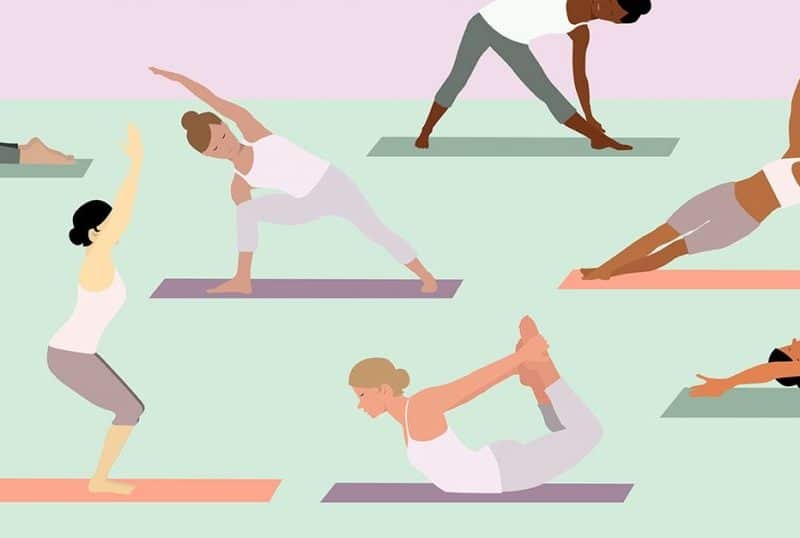What Vinyasa actually means and why we love it so much?
Whether you love your practice hot, slow or up-bit ‘flowing through’ or ‘taking a Vinyasa flow’ is an instruction you surely encounter a lot in Yoga classes.
We often start our practice with several rounds of Suria Namaskar (sun solutes) to generate heat in the body and get our prana going. We then continue to flow through in between two sides of a standing sequence, after a long hold of a balance pose, or just when our teacher suddenly poses to think things through.
In one class, you might perform a Vinyasa flow more than ten times. Even if you choose to rest through few rounds of flow, it is still a big chunk out of your practice. So maybe it is time for us to talk about what Vinyasa actually means and why we love it so much?
What does the word Vinyasa stands for?
‘Vinyasa’ in Sanskrit means few movements connected in a sequence. In Vinyasa, instead of practicing one posture at a time we are transitioning from one shape to another. Usually these transitions will be regulated or paced by our breath. Vinyasa encourages breath-movement coordination and connects us to our natural rhythm of breath. Flowing from one posture to another allows clarity in the mind. It is a mindful process that requires deep concentration and so can be experienced as a moving meditation.
The word ‘Vinyasa’ stands for any combination of postures but we will commonly use it to define a particular, favourite transition that we often repeat in practice. The full name for this one would be ‘Cheturanga Vinyasa’.
How to do a Cheturanga Vinyasa correctly?
Mastering the technique of a ‘flow through’ is really important, in particular because we repeat this transition so often in practice. We want to make sure we are taking maximum benefit out of each pose we practice and that we are not just constantly repeating the same wrong movement, eventually wearing out or bodies.
Here are few useful instructions to master you Vinyasa flow:

Image 1: Plank
Start in Plank pose, top of a push-up. Here the body is parallel to the mat, the core muscles are activ
e and the palms push the floor away firmly, activating your upper body strength. (see image 1)
From here, there are two ways to transition into low plank:
a. Modified variation for beginners: Inhale in Plank pose, then drop your knees to the mat keeping the body long and in a straight line, knees to shoulders. Exhale and slowly bend the elbows back bringing the rest of your body down to the mat. Hips, belly and chest should all arrive on the mat at the same time.

Image 2: chaturanga
b. Full Cheturanga: Inhale in Plank Pose. On your exhale, keep your legs straight and your belly drawn slightly inwards. Bend your elbows to 90 degree angle only, keeping a straight line from your crown to your hills. (see image 2)
In both variations, notice that your elbows are bending backwards and not to the sides; they should be almost touching your ribs on the way down. Keep your belly drawn inwards to activate your core and keep the spine elongated.
The next posture to flow into is a back bend.
We always enter a back bend on the inhale as it gives us advantage by creating length at the

Imagen 3: cobra
front of our bodies.
Again, you can choose one of two variations:
a. Modified Variation for beginners: If you dropped to your knees in your low plank, you will now need to lift i
nto your back bend from a lying down position. Inhale, and lift your head and chest of the mat. Press your palms downwards to activate your upper back muscles and try to keep your buttocks soft to release any tension from your lower back. This is Cobra (Bhujangasana). (see image 3)

Imagen 4: Up dog
b. Upward Facing Dog variation: If you lowered yourself into a full Cheturanga, try to keep only the palms and the feet on the mat as you lift the chest and drop your hips down. Inhale to create space and expand into your heart. (see image 4)
In both variations, try to press the tops of your feet strongly to the mat and stretch the legs to engage your things.
On your next exhale, tuck your toes under and press through the palms to lift yourself all the way up to Downward Facing Dog.
Is it the right time to take a flow?
Even though teachers tend to offer lots of opportunities to flow through a Cheturanga Vinyasa, you don’t always have to add it to your practice. Remember: the mat is your sanctuary and you should choose your practice according to your body. You are more than welcome to enjoy a full length class without taking any Cheturanga Vinyasa flows (for example, if you have a shoulder injury or just feeling fatigued).
You can choose to take some of the flows offered by your teacher and skip others to rest and prepare for the next sequence. Vinyasa is not only one, particular transition; it is the art of incorporating breath and movement. You can experience Vinyasa through so many different transitions and posture combinations! Always listen to your body and choose the right flow for YOU.
What are the benefits of incorporating Cheturanga Vinayasa in your practice?
Vinyasa sets a pace for your practice. It keeps your body heated and your mind focused on movement rather than external thoughts. When we are completely within our movement, thinking about the next move that comes with our next breath, we have no time to think about anything else. This is why Vinyasa feels so meditative and satisfying!
As for some physical benefits: Cheturanga Vinyasa builds strength in the arms and core, it helps create mobility in the shoulders and encourages coordination and physical awareness.
When we keep moving in our practice, we are charging our body with lots of energy, prana. We are also sweating, detoxifying, shutting down our mind and letting some lightness into our life. More than anything, Vinyasa is lots of fun! Give your body and mind this gift of movement and just flow through!



